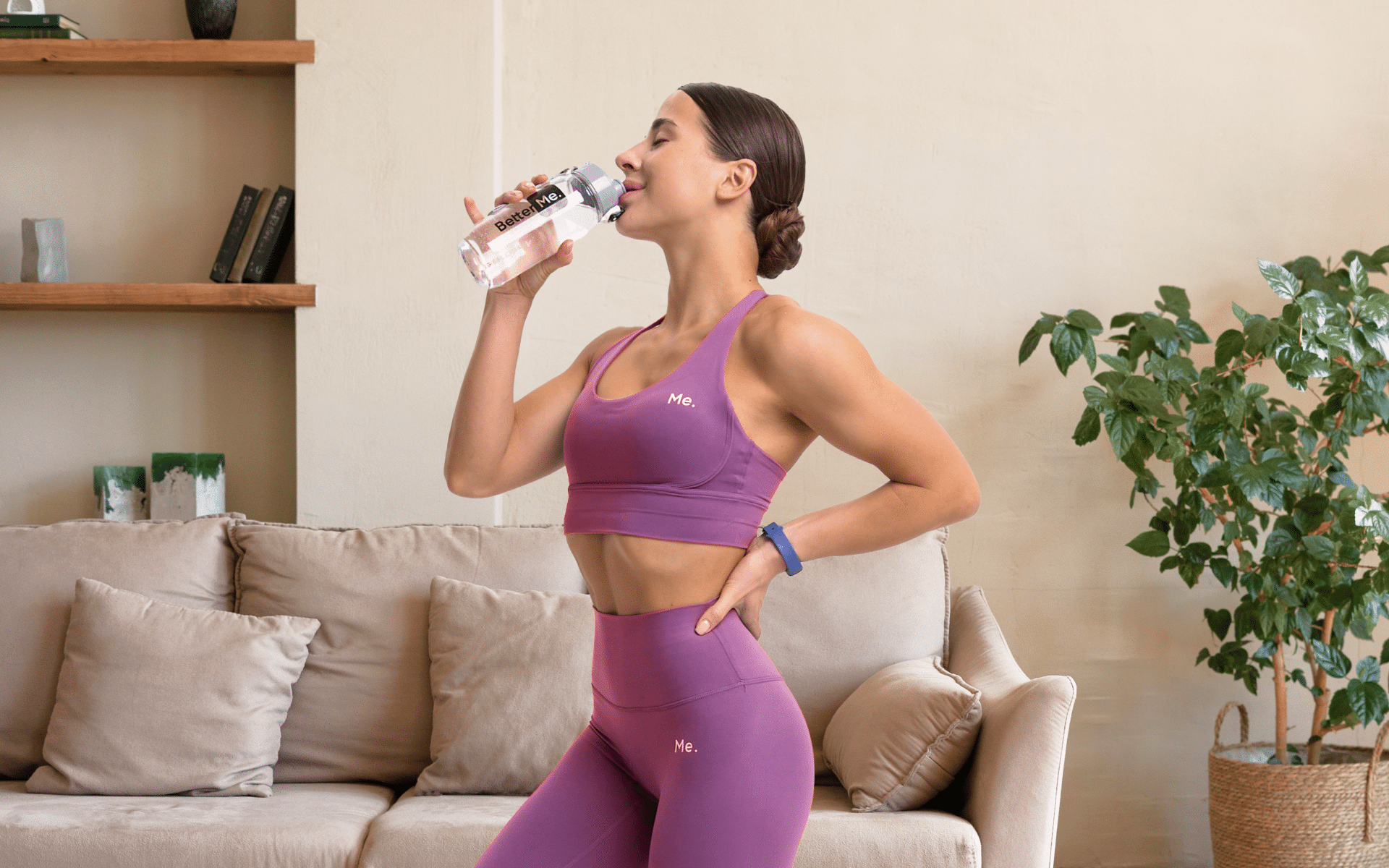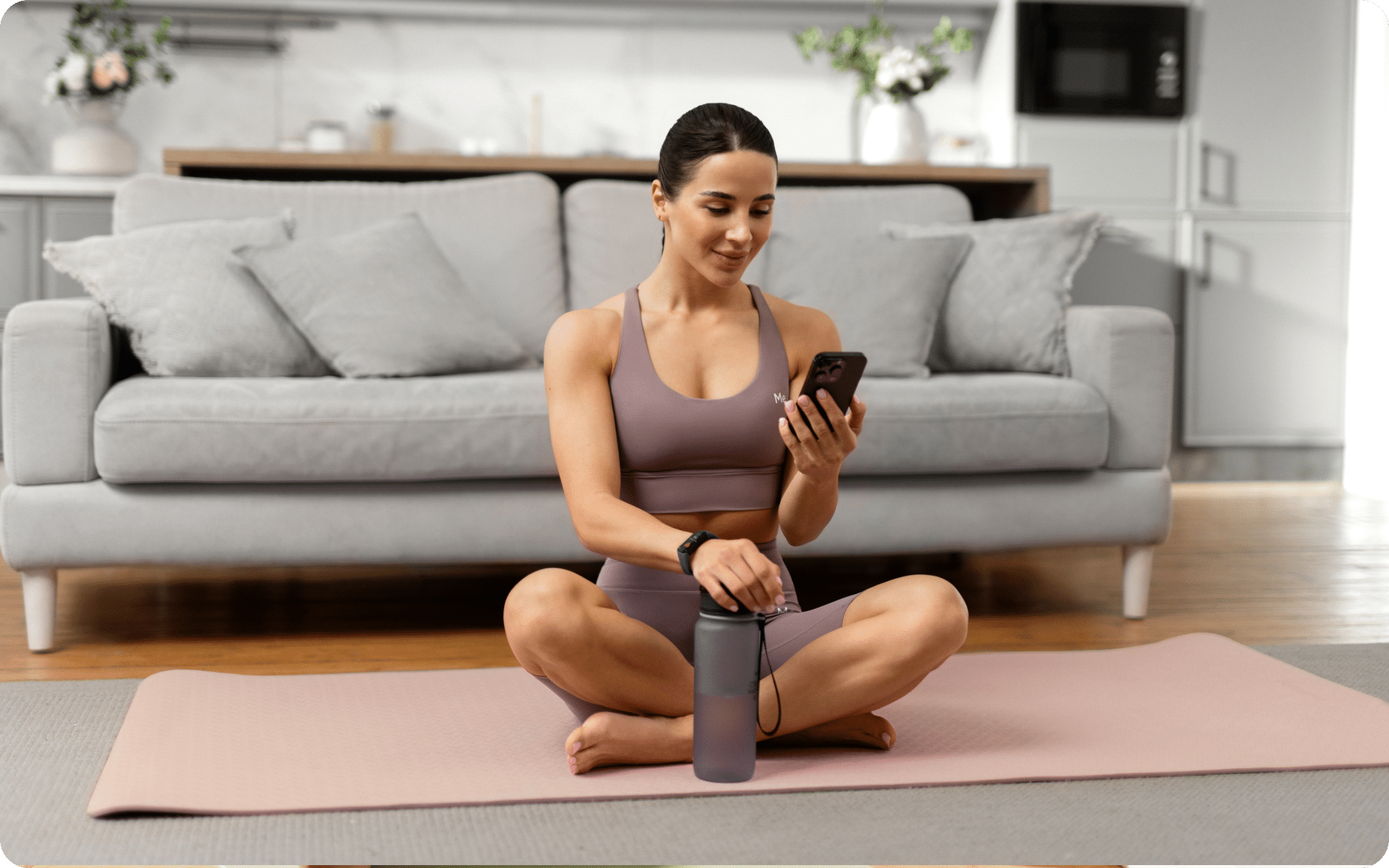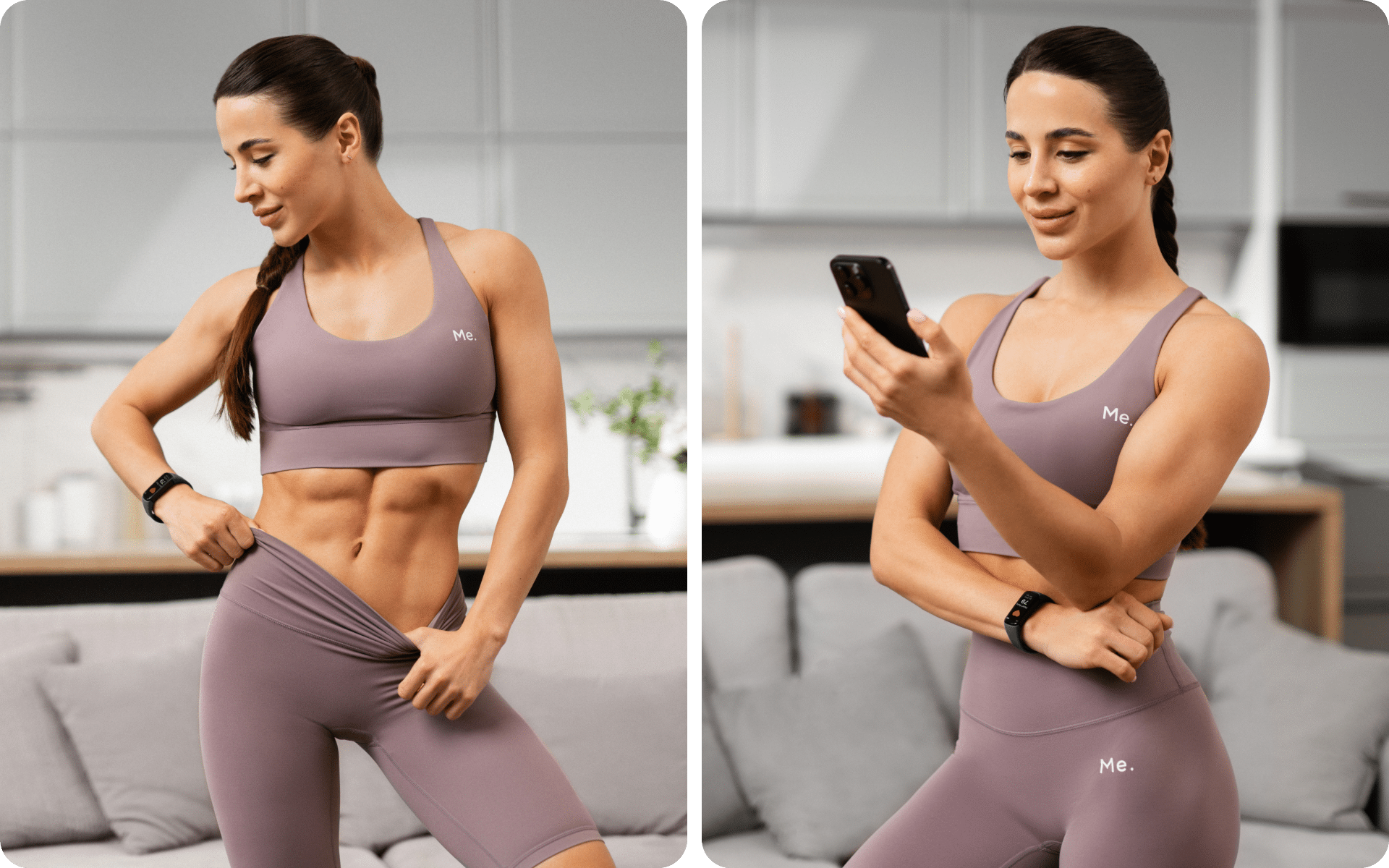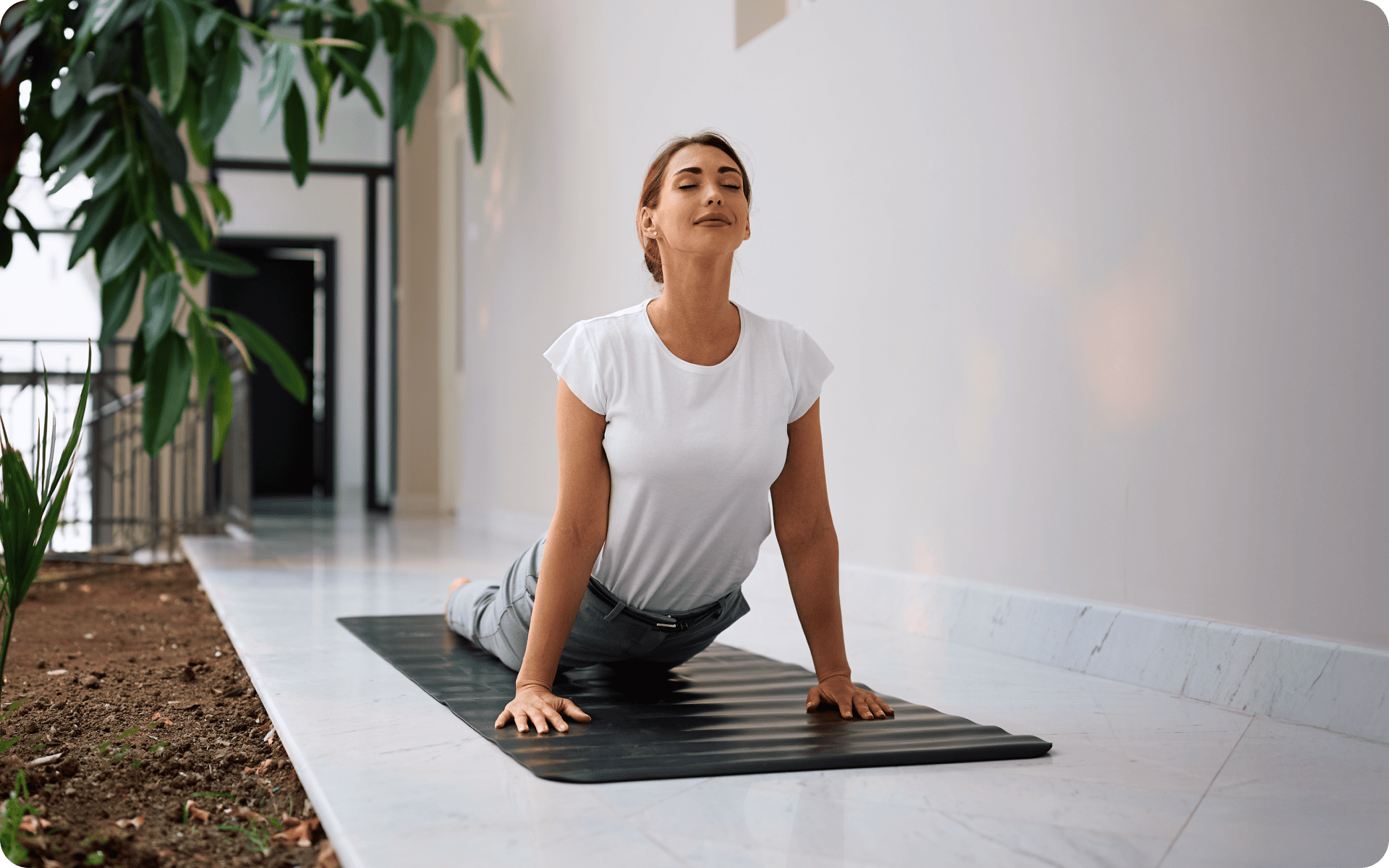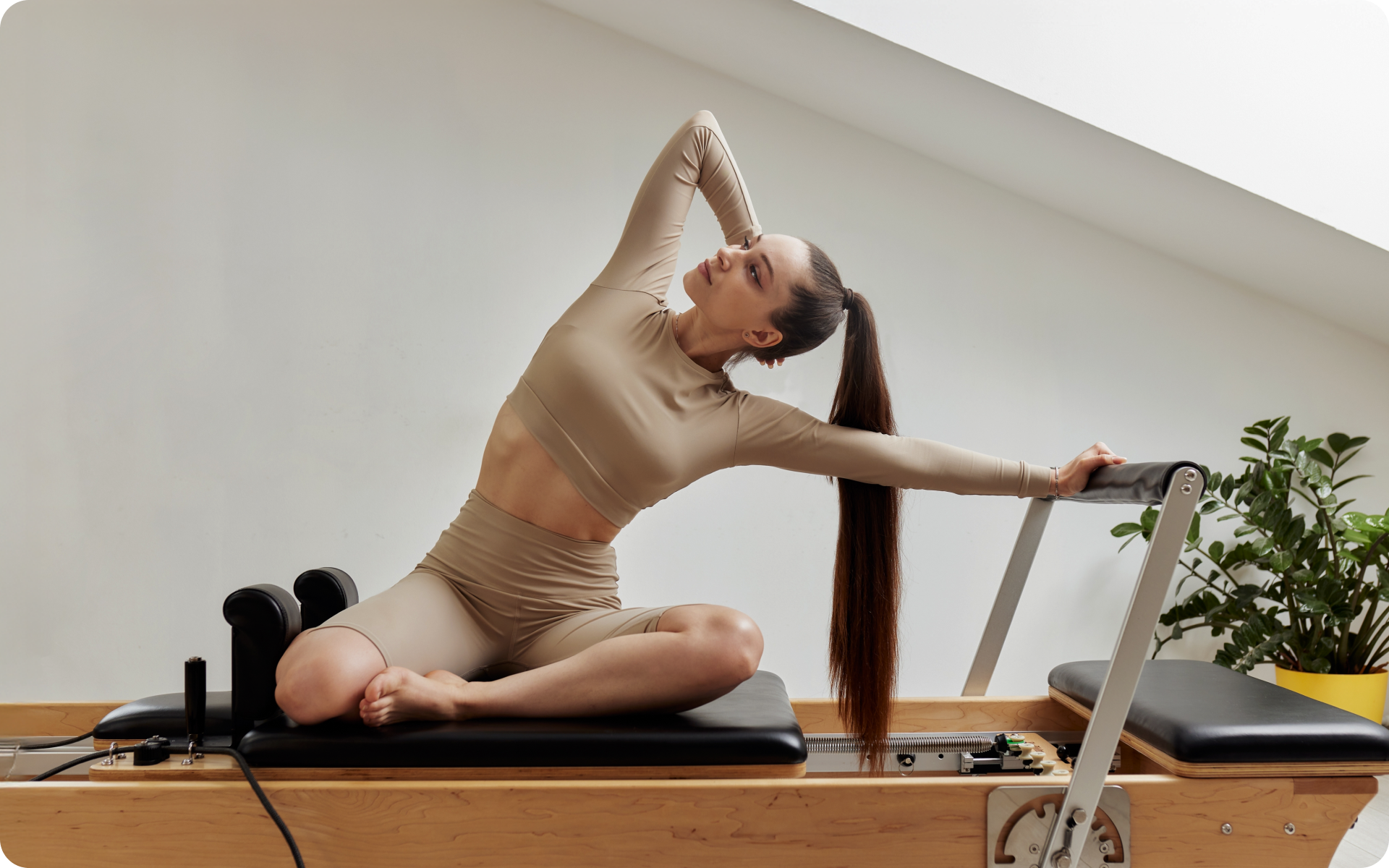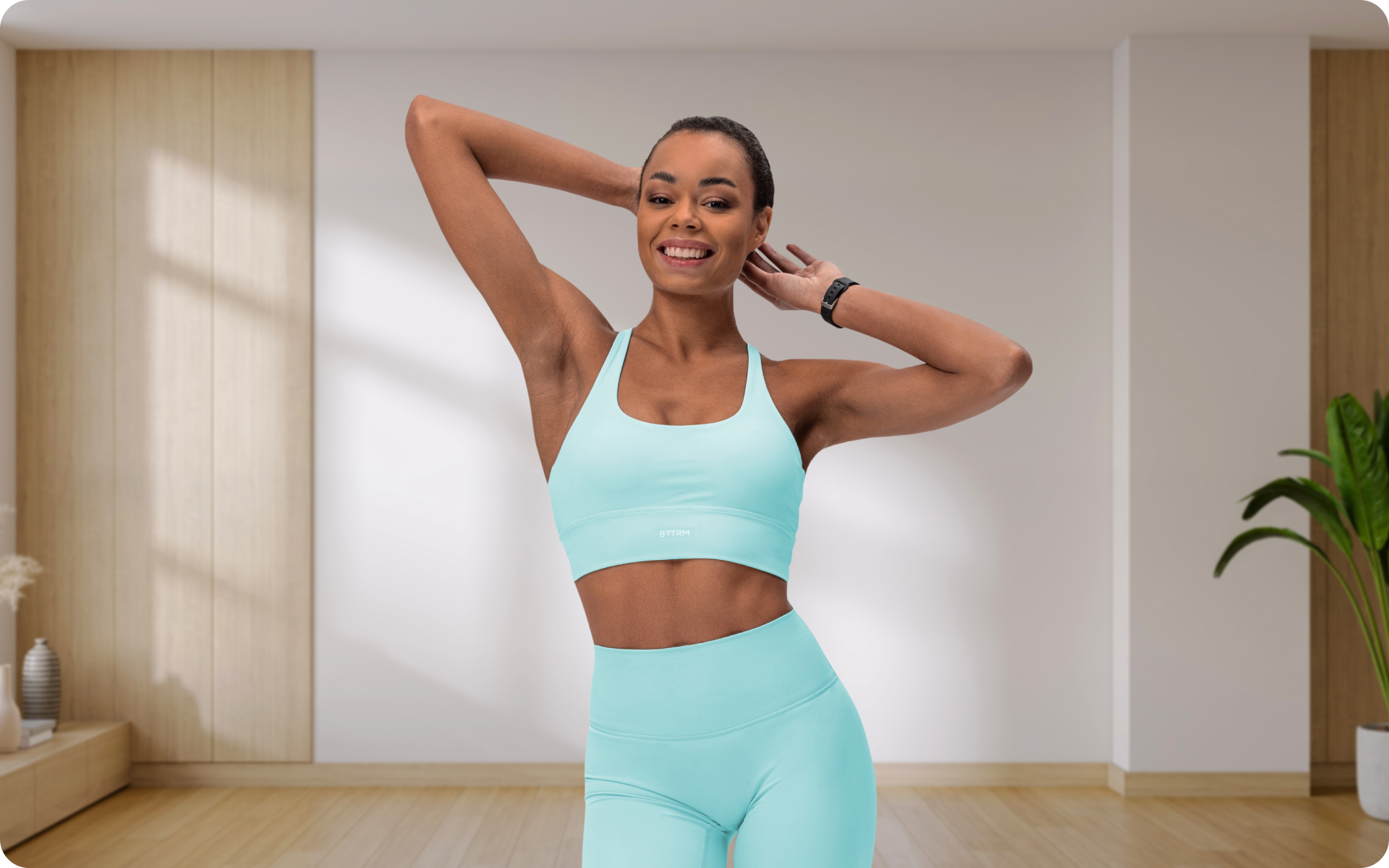If you are looking to take your Pilates practice to the next level, then look no further than what you are eating! Eating the right foods before and after a workout can make all the difference in how you feel and the results you achieve. The right nutrition can help maximize your energy, improve recovery time and enhance overall performance (7). Conversely, the wrong choices can leave you feeling sluggish and under-perform your potential. That’s why we’ve put together this comprehensive guide on everything you need to know about nutrition for Pilates. From understanding which meals will give your muscles energy and keep them fueled throughout the day, to learning how different snacks can help with recovery after a tough session, this guide has got it all covered.
What To Eat Before A Pilates Workout
Pre-workout nutrition principles for Pilates workouts are the same as for any other physical activity:
- You need to take in fuel that will help you perform at your best.
- Choose foods that are easy to digest and provide energy without making you feel too full or bloated.
- Avoid high-fat and high-fiber meals before exercise, which can take longer to digest and cause stomach discomfort.
- Portions should be small enough to allow for maximum energy without feeling sluggish during your workout.
- Timing is important – aim for a snack that is eaten approximately 30 minutes before your workout. A meal should be eaten two to three hours before.
- Hydration is important – follow the 8×8 rule (eight 8-ounce glasses of water) to stay hydrated.
Here are some suggestions of what to eat before a Pilates workout:
- PB & J On Whole Grain Bread – A classic combination of protein, carbohydrates and healthy fat.
- Yogurt with Fruit – Choose a plain low-fat yogurt and add in some fresh fruit for extra flavor and vitamins.
- Oatmeal – Oatmeal is a great source of complex carbohydrates that will give you energy throughout your workout. Keep portions small with this one; too much can be heavy in the stomach.
- Banana & Almond Butter – This combination of carbohydrates and healthy fat will help you stay energized during the class.
- Cottage Cheese & Berries – Cottage cheese is a great source of protein that will fill you up and keep you going through the class. Mix in some berries for a sweet treat and extra antioxidants.
- Protein shake – A high quality protein shake will give you the energy and nutrients to power through your workout. Be sure to choose a low-sugar option.
- Smoothie – A smoothie made with a low-sugar beverage, such as almond milk, and some fresh or frozen fruit will provide energy without weighing you down.
- Trail mix – A small handful of trail mix is a great snack before Pilates. Choose one with nuts, seeds and dried fruit for a balanced blend of carbohydrates, protein, and healthy fat.
Read More: The Ultimate Yoga Diet Guide: Fuel Your Body Right For A Better Practice
What To Eat After A Pilates Workout
After a Pilates workout, you’re looking to replenish energy, repair muscles, and restore hydration. You’re also looking to get the most bang for your buck when it comes to nutrition. There are a few guidelines to follow when choosing a post-workout meal.
- Make sure your post-workout meal contains carbohydrates, such as whole grains, fruits or vegetables.
- Include a lean source of protein like fish, chicken, eggs or low-fat dairy products.
- Healthy fats, such as nuts and avocados, are also important for muscle recovery.
- Aim to eat within an hour or so after your workout for maximum benefit.
- Hydration is key – drink water or electrolyte-enhanced beverages to replenish lost fluids.
Here are some suggestions of what to eat after a Pilates workout:
- Protein-packed green smoothie – Blend together some greens, almond milk, avocado and your favorite protein powder for a nutrient-packed post-workout snack.
- Eggs – Eggs are the best sources of protein and B vitamins. Have scrambled, poached or in omelet form for a delicious and nutritious meal.
- Salmon & Sweet Potato – This classic combo will provide you with the protein, carbohydrates, and healthy fats your body needs after a workout.
- Turkey Wrap – Make a wrap with some whole-grain tortillas, turkey, lettuce and tomatoes for an easy post-workout meal.
- Fruit & Nut Bar – Look for one with wholesome ingredients such as nuts, seeds and dried fruit for a great post-workout snack.
- Chicken & Rice – This one-pot meal is a perfect post-workout food. Cook up some lean chicken and brown rice together for a complete meal.
- Yogurt & Berries – Choose a plain yogurt and add in some fresh or frozen berries for a balanced snack.
- Electrolyte Drink – Replace lost electrolytes with a sports drink. An even better alternative is coconut water, which contains natural electrolytes and no added sugars.
Lean and toned up body isn’t just a far-fetched fantasy. Check out the BetterMe app and watch it propel your weight loss journey into high gear!
What Type Of Diet Works Best With Pilates?
Aside from what you eat before and after a Pilates workout, it’s important to follow an overall healthy diet. There are quite a number of diets out there that can work with Pilates:
Mediterranean Diet
Lauded for its heart-healthy benefits, the Mediterranean diet emphasizes plant-based foods like fruits and vegetables, whole grains, legumes and nuts. It also recommends eating fish and seafood at least twice a week.
Why it works – Eating a Mediterranean-style diet offers numerous potential health benefits such as reducing the risk of heart disease, cancer and diabetes (2). The emphasis on plant-based foods will provide your body with the fuel it needs to power through a Pilates workout.
Vegetarian Diet
A vegetarian diet consists of plant-based foods as the main source of nutrition. This includes fruits, vegetables, legumes, grains, nuts, and seeds. You may also consume dairy and eggs depending on the type of vegetarianism you follow (10).
Why it works – A vegetarian diet is typically high in fiber, vitamins and minerals. Eating plant-based foods will not only power your workouts but also provide the essential nutrients your body needs.
Whole Foods Diet
A whole foods diet consists of eating food in its most natural state, as close to its source as possible. This means including fresh fruits, vegetables, whole grains, legumes, nuts and seeds in your meals while avoiding highly processed foods.
Why it works – Eliminating highly processed foods from your diet may give you more energy and help you recover faster after a workout. Eating plenty of fresh fruit, vegetables, and whole grains will also provide your body with the vitamins and minerals it needs to stay healthy (5).
Keto Diet
The keto diet is a very low-carb, high-fat diet. It focuses on eating foods such as fatty meats, eggs, nuts and seeds, leafy greens, low-carb vegetables and healthy fats.
Why it works – The ketogenic diet is popular for its ability to help with weight loss, and it might be effective for improving certain health parameters (9). This type of diet is also said to have a positive effect on energy levels, which can help you power through a Pilates workout.
Read More: Keto Green Tea: The Perfect Addition To Your Low-Carb Diet
How To Be Successful WIth Pilates And Low Carb Diet
There’s an obvious dilemma when it comes to Pilates and a low-carb diet: the exercises require energy, which is supplied by carbohydrates.
So how can you make sure that you’re getting the energy you need to power through a Pilates workout while still maintaining your low-carb lifestyle?
1. Eat Protein
Although it’s not the body’s preferred source of energy, protein can provide some fuel for a Pilates workout. Eating lean proteins such as chicken and fish should help enhance performance, recovery and keep you energized (6).
2. Include Healthy Fats
Healthy fats such as nuts, avocados and olive oil can provide some energy for your workout (1). They also provide essential fatty acids, which are important for many bodily functions.
3. Choose Unrefined Carbs
When you do need a carbohydrate source, opt for unrefined carbs such as vegetables, fruits and whole grains. These provide some energy for your Pilates workout without the added sugar and calories (8). Fit these into your daily meal plan as needed.
4. Choose The Right Type Of Keto Diet
If you decide to follow a ketogenic diet, make sure you know what type of diet you are following. There are a few different versions of the keto diet and some are more restrictive than others (4).
For example, the Standard Ketogenic Diet (SKD) is the most restrictive and involves consuming fewer than 20-50 grams of carbohydrates per day.
The Cyclical Ketogenic Diet (CKD) is also a popular option and involves cycling between periods of high and low carb intake. On days you work out, you would increase your carb intake for a short period of time.
The Targeted Ketogenic Diet (TKD) is the least restrictive, and allows you to increase your carb intake around the time of your Pilates workout.
4. Stay Hydrated
Staying hydrated is essential to getting the most out of your workout (3). Keep a water bottle with you and sip on it throughout your Pilates session to make sure that you stay hydrated.
5. Listen To Your Body
It’s important to remember that everyone is different and there are no hard and fast rules when it comes to nutrition. Listen to your body and adjust your eating habits accordingly so that you’re getting the energy you need for a successful Pilates workout.
Looking for a way to break the vicious cycle of weight loss and tone up all the jiggly parts? Watch the extra pounds fly off and your muscles firm up with the BetterMe app!
The Bottom Line
The best diet for Pilates depends on your individual needs, goals and lifestyle.
If you’re looking to fuel your workouts while maintaining a low-carb lifestyle, then focus on eating whole, unprocessed foods and include healthy fats and proteins. Otherwise, a Mediterranean, Whole Foods or Plant-Based diet may suit your needs better.
Ultimately, listen to your body and adjust your eating habits accordingly so that you can get the most out of your Pilates workout.
DISCLAIMER:
This article is intended for general informational purposes only and does not serve to address individual circumstances. It is not a substitute for professional advice or help and should not be relied on for making any kind of decision-making. Any action taken as a direct or indirect result of the information in this article is entirely at your own risk and is your sole responsibility.
BetterMe, its content staff, and its medical advisors accept no responsibility for inaccuracies, errors, misstatements, inconsistencies, or omissions and specifically disclaim any liability, loss or risk, personal, professional or otherwise, which may be incurred as a consequence, directly or indirectly, of the use and/or application of any content.
You should always seek the advice of your physician or other qualified health provider with any questions you may have regarding a medical condition or your specific situation. Never disregard professional medical advice or delay seeking it because of BetterMe content. If you suspect or think you may have a medical emergency, call your doctor.
SOURCES:
- Fat metabolism in exercise (1998, pubmed.ncbi.nlm.nih.gov)
- Health Benefits of the Mediterranean Diet: Metabolic and Molecular Mechanisms (2018, academic.oup.com)
- Hydration to Maximize Performance and Recovery: Knowledge, Attitudes, and Behaviors Among Collegiate Track and Field Throwers (2021, ncbi.nlm.nih.gov)
- Ketogenic diets: Boon or bane? (2018, ncbi.nlm.nih.gov)
- Nutrition Benefits and Considerations for Whole Foods Plant-Based Eating Patterns (2022, pubmed.ncbi.nlm.nih.gov)
- Protein for exercise and recovery (2009, pubmed.ncbi.nlm.nih.gov)
- Role of nutrition in performance enhancement and postexercise recovery (2015, ncbi.nlm.nih.gov)
- Science and Politics of Nutrition: Dietary carbohydrates: role of quality and quantity in chronic disease (2013, ncbi.nlm.nih.gov)
- The Potential Health Benefits of the Ketogenic Diet: A Narrative Review (2021, mdpi.com)
- Vegetarian Diet: An Overview through the Perspective of Quality of Life Domains (2021, mdpi.com)
